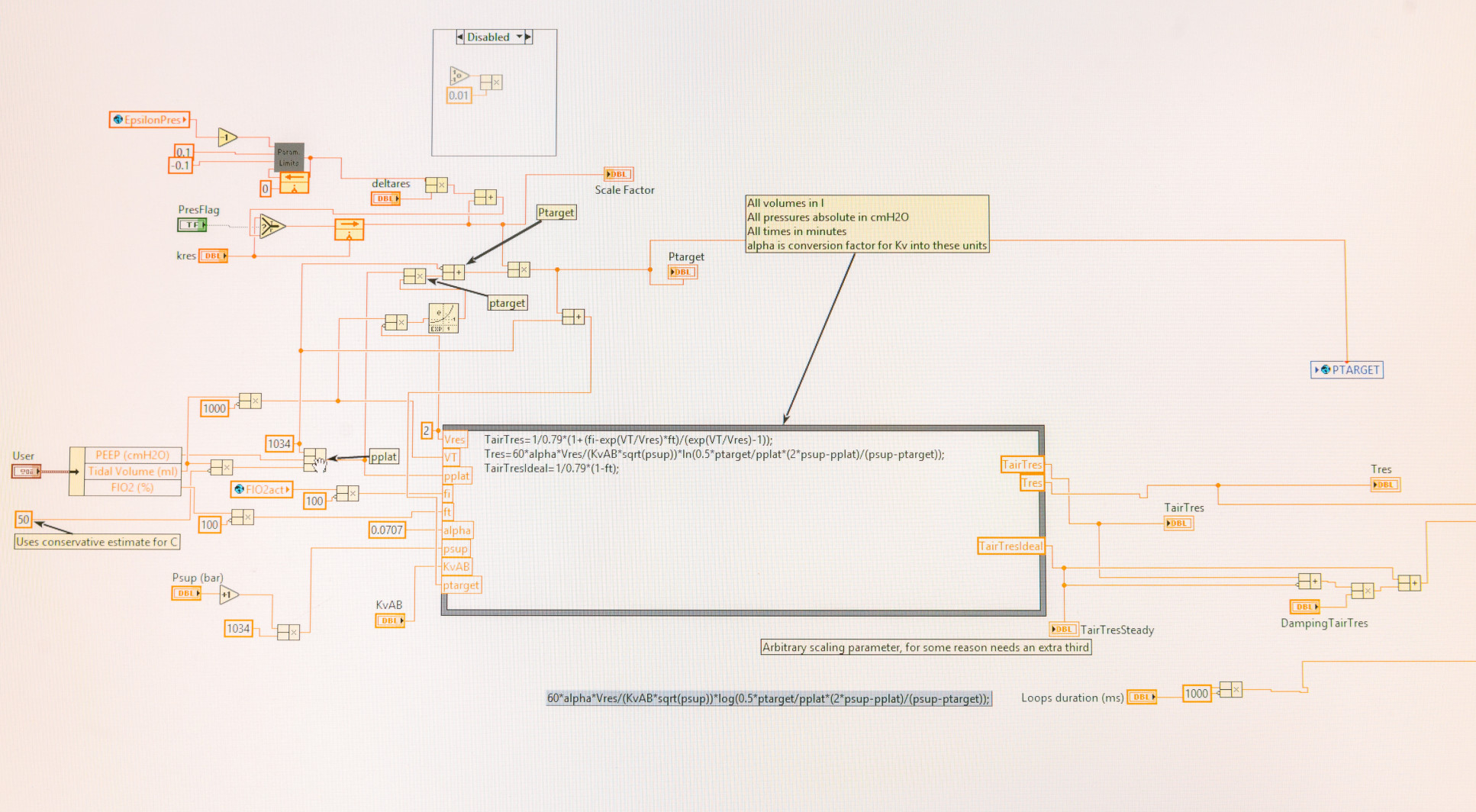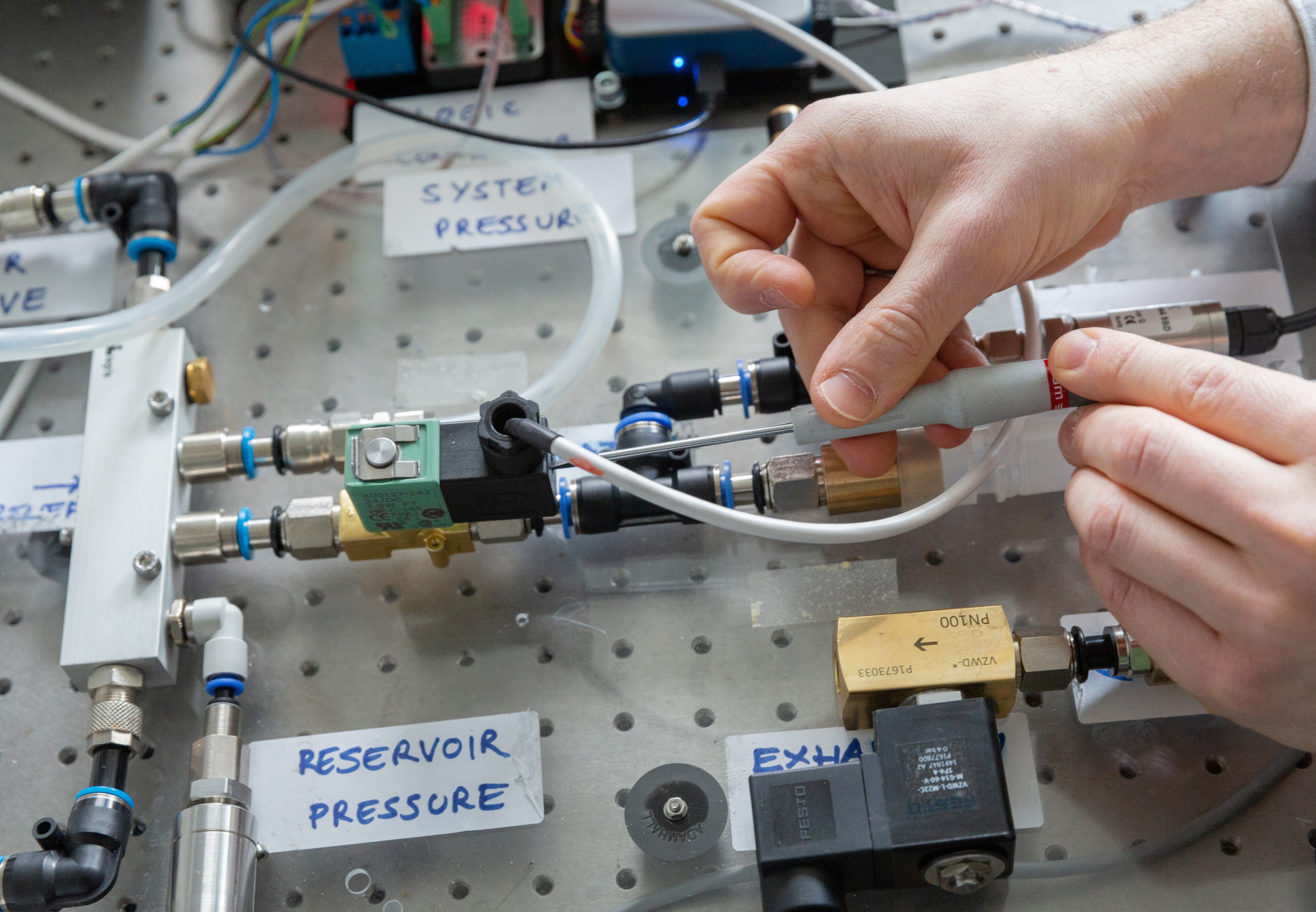

A new low-cost ventilator design invented during COVID-19 could address the global shortage of ventilators for other respiratory diseases.
The ventilators, which are required by patients in intensive care units (ICU) who are seriously ill with respiratory diseases like COVID-19, flu, and tuberculosis, are both simpler and cheaper to make than currently available ventilators.
Now, the creators of the designs hope that their promising technology, initially developed for emergency short-term ventilators in response to the coronavirus pandemic, will help to address the shortage of mechanical ventilators in developing countries in the long term.

Many of the less affluent parts of the world simply have minimal access to ventilators. Dr Joseph van Batenburg-Sherwood Department of Bioengineering
In a new paper published in Frontiers in Medical Technology, the researchers behind the ‘RELAVENT’ ventilator (previously known as JAMVENT), have demonstrated that the design achieves all of the performance requirements set out in ISO 80601, the international standard for critical care ventilators. The team also showed that the system performs equally well with a home-use oxygen concentrator as with pressurised gas supplies like those found in hospitals.
The paper also sets out the designs of the prototype and details the rigorous testing required for regulatory approval. They hope that following funding and approval as a medical device, the ventilators can be used in low-and-middle income countries (LMICs) and newly emerging economies (NEEs), which suffer from an historical long-term shortage of ventilators.

Lead researcher Dr Joseph van Batenburg-Sherwood, of Imperial College London’s Department of Bioengineering, said: “ICU ventilators made by big manufacturers have always been too expensive and complex for developing countries to buy and maintain, so many of the less affluent parts of the world simply have minimal access to ventilators. In addition, most of the new ventilator designs created for COVID-19 were based on emergency short-term manufacturing and are not appropriate for long-term intensive care support, which is desperately needed in LMICs and NEEs.”
Our ventilators are inspired by the beauty of simplicity...This way, we have made the technology much cheaper and less expensive to make and maintain. Dr Joseph van Batenburg-Sherwood Department of Bioengineering
The next step towards approval as a medical device will be development from the advanced prototype stage to a mass-manufacturable medical device, which must be carried out under special regulatory conditions. To do this, they have launched a start-up, known as Phaedrus World Medical Limited alongside two experienced med-tech entrepreneurs. They are currently seeking investment to turn their designs into useable ventilators.
Liz Hughes, CEO of Phaedrus World Medical Limited, said: “RELAVENT has the potential to save many lives. This has only been made possible by the efforts of the amazing Imperial engineering team alongside clinical input from our medical advisor who has first-hand experience in our target markets.”

The beauty of simplicity
We are keen to bring our ventilator to as many hospitals as possible to combat serious respiratory diseases worldwide. Professor James Moore Department of Bioengineering
Co-author Dr Jakob Mathiszig-Lee, of Imperial’s Department of Surgery and Cancer, said: “In the UK we suffered a shortage of mechanical ventilators to treat our sickest COVID-19 patients, but such a shortage of reliable mechanical ventilation is the norm in much of the world. In LMICs and NEEs other respiratory diseases such as tuberculosis, pneumonia and influenza result in more deaths every year than COVID-19.”
Dr van Batenburg-Sherwood added: “Our ventilators are inspired by the beauty of simplicity. Rather than using the complex control valves used in most ventilators, we conceived a way to use simple on-off valves to provide the high-level performance required of ICU ventilators. This way, we have made the technology much cheaper and less expensive to make and maintain.”
Co-author Professor James Moore, Director of Translation for Imperial’s Department of Bioengineering, said: “We are keen to bring our ventilator to as many hospitals as possible to combat serious respiratory diseases worldwide. We have the right technology to help address this unmet medical need and hope to attract investment to help take it further.”

This work was funded by Royal Academy of Engineering and Imperial College COVID-19 Response Fund.
“A Novel Ventilator Design for COVID-19 and Resource-Limited Settings” by Madekurozwa et al., published 4 October 2021 in Frontiers in Medical Technology.
All images credit to Thomas Angus/Imperial College London
Article text (excluding photos or graphics) © Imperial College London.
Photos and graphics subject to third party copyright used with permission or © Imperial College London.
Reporters
Thomas Angus [Photographer]
Communications Division

Contact details
Tel: +44 (0)20 7594 2858
Email: t.angus@imperial.ac.uk
Show all stories by this author
Caroline Brogan
Communications Division

Contact details
Tel: +44 (0)20 7594 3415
Email: caroline.brogan@imperial.ac.uk
Show all stories by this author




Leave a comment
Your comment may be published, displaying your name as you provide it, unless you request otherwise. Your contact details will never be published.